SpeedFan 4.52 is a nice set of features for monitoring and managing some PC metrics. In particular, this software product allows you to monitor the temperature indicators of the processor, power supply, system block, hard drive etc., subject to the availability of appropriate tracking sensors on computer components. However, the main function speedfan programs- regulation of the speed of rotation of coolers depending on the corresponding temperatures, which allows to reduce power consumption and background noise during low use of computer resources. At the same time, adjustment is possible both in automatic and in manual mode. Another feature of SpeedFan is the ability to automatically regulate the frequencies (cycles) of the internal processor bus and the PCI bus (but this should be considered a bonus).
![]()
The main features of the SpeedFan program:
– Fan speed control.– Implemented support for SMART technology.
– The user is given the opportunity, at his discretion, to specify the temperature and voltage limit values. In this case, you can set options for the program to act when these limits are reached: launch external program, display a message, sound warning, send a message to e-mail.
– Changing the system bus frequencies on motherboards equipped with frequency generators supported by the program.
– Statistics of parameters taken and recording them in the log.
– Plotting temperature changes, voltages and fan speeds.
– Support for working with HDD on EIDE, SATA and SCSI interfaces.
– Performs web analysis of the state hard drives according to S.M.A.R.T. using an online database.
Russification of the SpeedFan program:
1. Install the SpeedFan program and run it.2. In the main window (Readings), click the Configure button, select the Options tab, enter the Language selection list and select Russian.
3. Now SpeedFan will be in Russian!
Last changes
Changes and additions in the latest version of SpeedFan 4.52 rus:
- Added full IPMI support.– Added full support for IT IT8771E.
– Added full support for Intel Sunrise Point (Z170) SMBus.
– Added full support for STMicro STTS2004.
– Added full support for NCT6793D.
- Added full support for Giantec GT34TS04 and GT34TS02.
- Added support for Atom E3800 SMBus.
– Added support for Atom C2000 SMBus.
– Added support for Fintek F71878A / F71868A on non-standard addresses.
– Enabled SMBus mode on Intel 6 Series / C20x, if necessary.
– Fixed SCSI_PASS_THROUGH access on some systems.
– Nuvoton NCT6791D and NCT6792D sixth fan fixed readings
– Added support for NCT6793D alternate registers
- Fixed bugs found in previous version Speedfan 4.51.
The cooling system is one of the most important mechanisms of any PC, but many users often do not even realize that most of the problems in their computer are due to overheating. various devices. To avoid such troubles, it is better to configure the cooler in BIOS in advance.
What does it affect?
Cooling system modern computers has an extremely simple and uncomplicated design, which, in fact, is a fan (cooler) installed inside the system unit. Such fans are placed near all the most important mechanisms that can overheat during their operation - the processor, video card and power supply.
Since it is possible to configure a video card and other devices in BIOS only in the most primitive way, many may notice that from time to time they heat up too much during operation, and often this is the cause of a malfunctioning cooling system. At the same time, it is worth noting that the reasons can be very diverse, ranging from improper operation of coolers to their banal clogging, from which the devices cannot work normally, causing overheating of the rest of the equipment. To eliminate the first cause of this problem, you have to configure the coolers yourself so that they work on full power and ensure proper air flow.
If you do not want to deal with BIOS settings, you can download the Speed Fun program, which also allows you to control the operation of coolers.
How to set them up?
There is nothing complicated in configuring the coolers through the BIOS. This is done as follows:
It happens that some users write that they are using the "outdated" BIOS mode. Few people know what this problem is, since it occurs mainly in people using operating system
Windows 10 on relatively old motherboard models. To get rid of it, change the motherboard or just go back to early version this operating system.Any computer or laptop needs a good cooling system to function properly. During operation, items such as the processor (CPU), graphics card, motherboard give off a lot of heat, get very hot. The higher the CPU performance rating, the more heat it gives off. If the PC does not quickly remove air, this can lead to various system failures, incorrect functioning of equipment, reduced performance, and cause failure of important elements. Why is the processor getting hot? How to cool the CPU in PCs and laptops? Which cooler to choose for optimal PC cooling? We will try to answer these questions in this article.
Causes of CPU Overheating
If the computer starts to turn off, fail, freeze, this may be due to overheating of the CPU. The reasons why the PC processor starts to overheat are of a very different nature. Therefore, we will consider the main ones, and also give simple ways problem solution.
In most PCs, laptops, the main elements of the cooling system are a cooler (fan) and a radiator, which are installed on the processor. Due to the tightest contact, heat transfer between the surface of the heatsink and the processor is minimal, which in turn ensures fast, efficient heat dissipation.
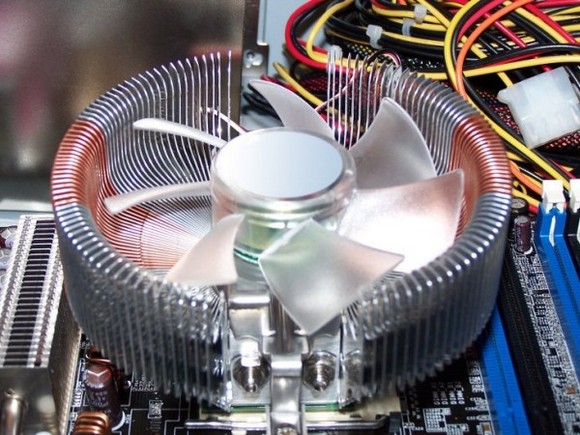
The radiator can be monolithic or consist of two parts. In the first case, it is completely fixed on the processor (budget option), in the second case, only a small part of it is attached to the CPU, inside which there are heat pipes that transfer heated air to the main radiator.
The primary role in the system of ventilation of the case and cooling of the PC is played by the fan. Regardless of its location, it cools the entire radiator or its main part. The more efficiently it works, the better the heat dissipation from the CPU will be, and, accordingly, its temperature will be lower. Heat pipe coolers provide more CPU cooling.
If the processor starts to warm up, the main reasons include:
- contact deterioration between processor and heatsink;
- speed reduction cooler (fan) operation;
- use of inefficient cooling systems;
- absence ventilation systems in the case, in the PC power supply;
- pollution ventilation holes body dust;
- failure cooling systems;
- wrong fixing the radiator.
An increase in the process temperature can also be caused by the fact that the cooler is trite clogged with dust. For this reason, its speed and efficiency are reduced. The fan is simply not able to remove heat. To increase heat dissipation, after replacing the CPU, it is worth purchasing and installing a new model of case cooler.
Another reason is upgrade PC. For example, after replacing the old CPU, a new, more powerful, productive one was installed. But at the same time, the fan in the cooling system remained the same. Due to the increase in power, the processor cooler simply does not cope with its task in full.
If the processor is heating up, consider what to do in this situation.
How can I cool the processor of a PC, laptop
Overheating of the processor in laptops, desktop computers significantly increases the load on all system elements. To reduce heat generation, reduce energy consumption, it is necessary:
- check the condition of the cooling system, perform cleaning;
- reduce the load on the CPU;
- overclock the CPU cooler;
- replace thermal paste;
- install additional coolers.
You can also reduce the heat dissipation of the processor in BIOS settings operating system. This is the most simple and affordable way, which does not require special time costs, physical effort.
There are special technologies that reduce CPU frequency when idle. For AMD processor technology is called Cool'n'Quite, For Intel - Enhanced SpeedStep Technology. Consider how to activate it.
In Windows 7, you need to go to " Control Panel”, select the section “ Power supply". In the window that opens, check which mode is active: " Balanced», « High performance », « Energy saving". To activate the technology, you can select any, with the exception of "High performance". In Windows XP, select " Power Saving Manager».
Energy saving settings must be enabled in the BIOS, if they are not, then you can load the default settings.
It is equally important to pay attention to the system case ventilation. If the cooling system is working properly, it is cleaned regularly, but the CPU is still warm, then you need to see if there are any obstacles in the way of the air flow, for example, if they are covered with thick wire loops.
There should be two or three fans in the system unit, PC case. One - for blowing in on the front wall, the second - for blowing out on the rear panel, which in turn provides good airflow. Additionally, you can install a fan on the side wall of the system unit.
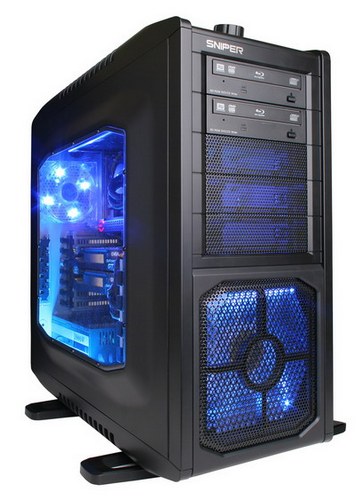
If the PC system unit is in a nightstand inside the table, then do not close the doors so that the heated air comes out. Do not block the ventilation openings of the case. Place the computer a few centimeters from the wall, furniture.
For a laptop, you can purchase a special cooling pad.
Available for sale big choice universal models of stands that adapt to the dimensions, the size of the laptop. The heat-dissipating surface and the coolers built into it will contribute to more efficient heat dissipation, cooling.
When working on a laptop, always keep the workplace clean. The ventilation openings must not be blocked by anything. Objects lying nearby should not interfere with air circulation.
For laptops, you can also do cooler overclocking. Since the PC has at least three fans (on the CPU, video card, built-in storage), and most laptop models have only one. The second can be installed if there is a powerful video card. At the same time, you can overclock coolers:
- through special utilities;
- through the BIOS.
Before increasing the fan speed, first of all, you need to clean the cooler, the elements of the motherboard from dust.
Cleaning the cooling system of a laptop, a stationary PC should be done at least once every six to seven months.
Cleaning the cooling system
If the processor heats up, check the condition of the fan, the entire PC cooling system. Dust is a serious enemy of any technology. Clogged between the edges of the radiator, dust, villi, pet hair impair air circulation.
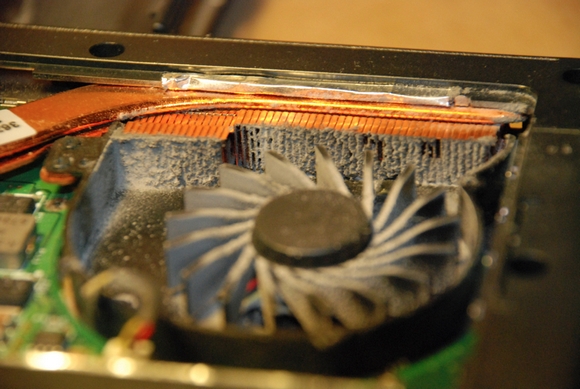
To thoroughly clean it, you need to disconnect the cooler from the power supply and disassemble it. By removing the fan, you can also clean the dust accumulated on the radiator. Cleaning of the radiator, cooler blades can be done with a special plastic spatula, a hard brush. After removing the dust, wipe the radiator with a damp cloth.
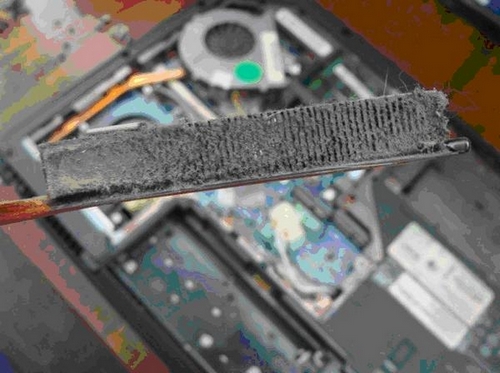
In addition to removing dust from the radiator, the cooler, wipe the wires in the case from dust. Blow or wipe the vents on the case.
Replacing thermal paste
Updating, replacing the thermal paste on the processor will help reduce the heat dissipation of the processor. Thermal paste is nothing more than a lubricant for cooling the processor. It is a heat conductor between the CPU and the heatsink, eliminates the microscopic irregularities of the contacting surfaces, removes air between them, which prevents heat dissipation. Good, high-quality thermal paste will reduce the temperature by 5-10 degrees.
Over time, the paste dries out, loses all its properties, and does not cool the processor. Therefore, it must be replaced every six months. If the PC has a more modern CPU, the thermal paste can be changed less frequently. You can buy it at any store computer technology. Thermal paste should be of high quality, good.
Before the thermal paste that cools the CPU is applied, you need to get to the processor itself. For this:
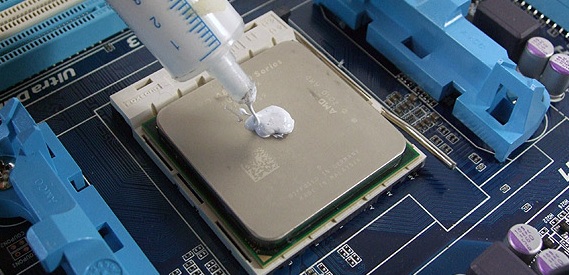
How to choose a good thermal paste
Given the large selection of thermal pastes, many are interested in the question of which thermal paste is better. Note that the difference between the pastes of different manufacturers can be from ten to twenty degrees. It all depends on the quality characteristics, heat-conducting properties of thermal interfaces. A good thermal paste should have low thermal resistance, high thermal conductivity.
According to experts, to cool the processor, you can purchase:
- Arctic Cooling MX-4.
- Arctic Silver Ceramique.
- Noctua NT-H1.
- Prolimatech PK-1.
- Thermalright Chill Factor III.
- Zalman ZM-STG2.
- Glacialtech IceTherm II.
- Coollaboratory Liquid Pro.
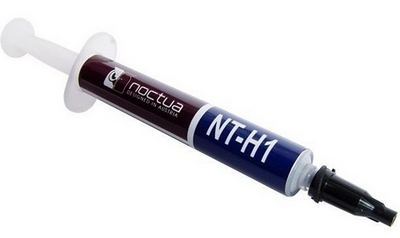
Some pastes can also be used to overclock the processor. For example, Arctic Cooling MX-4, Glacialtech IceTherm II, Thermalright Chill Factor III, Coollaboratory Liquid Pro. Knowing which thermal paste is best, how often and how to replace it correctly, you can significantly reduce the temperature of the CPU, thereby extending its operational life.
How to undo cpu overclocking
Many users, in order to improve performance, speed up the CPU, overclock the processor (overclocking). But in some cases, this procedure significantly increases the load on the CPU, which can negatively affect its functioning and lead to a decrease in the operational resource.
To check the performance of the CPU after overclocking, it is necessary to warm up the processor using special utilities.
If you are interested in how to remove processor overclocking, go to CMOS and BIOS. Cancel all motherboard voltage settings, return them to normal configuration.
Actions are performed in the following sequence:
- We go into the BIOS by pressing the desired button when the computer starts.
- Select the item " Set BIOS Default/Use Default Settings", press Enter.
- A window will appear in which you need to press the Y key.
- After that, the original settings that were set before the overclocking of the CPU will be returned.
- Now we save all the changes made, exit the settings.
- We restart the computer.
You can also do this by selecting the option " Restore Fail Safe Defaults”, having previously found out on the Internet the exact specifications of the installed motherboard, CPU. This is necessary in order to make changes by setting basic settings frequency, voltage.
In addition, to the base value, you can change the setting of the system bus frequency, multiplier, returning back all the parameters that were changed during overclocking.
You can also remove the optional cooling hardware that you installed to prevent the CPU from overheating.
You can manage, control the operation of the processor through special utility - CPU Core, where you need to specify, set the desired values of the multiplier, bus frequency.
Installing additional fans
If the CPU continues to heat up after cleaning, canceling overclocking, then in order to increase the cooling efficiency, we recommend installing additional fans on the case to increase air circulation. This is necessary if there are many heating elements inside the system unit or if there is a rather small amount of free space inside it.
Opt for larger diameter coolers that provide more airflow at lower RPMs. Such models work efficiently, but noisily. When installing, consider the direction of their work.
CPU coolers are classified into:
- Boxed, without heat pipes. The most common models. Consists of an aluminum plate with ribs. May have a copper base with a fan attached to it.
- Cooling systems on thermal aluminum, copper tubes. They function by removing heat, which is carried out due to the liquid circulating in them. Have high performance efficiency.
When choosing fans for the cooling system, read the installation instructions, check its compatibility with the socket, motherboard What socket is there for the processor. Consider weight, fan size, heatsink type.
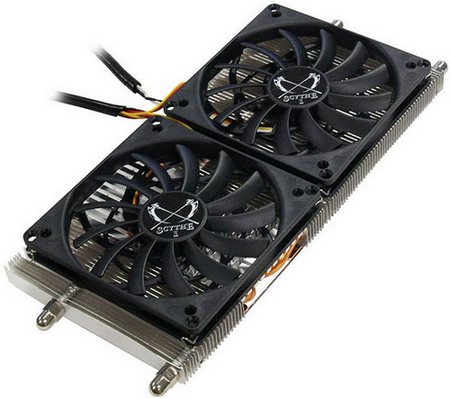
Too large, high-power fans will create an additional load on the motherboard, and may cause its deformation. As for the size, choose the chassis for the bus, consider the location of other components. Choose products from well-known, trusted manufacturers.
If a large number of hard drives are installed, then you can optionally install a fan on the front panel of the case, as well as on the rear top of the system unit to remove warm air to the outside. Modern cases allow you to install at least two fans: from below, if there is no perforation on the front panel, and opposite the location of hard drives.
If the PC has a highly advanced hardware, the processor heats up, then you can remove the side cover of the system unit. In this case, the cooling efficiency will be increased significantly.
How to overclock the cooler
You can overclock the cooler, as already noted, through the BIOS or through special free utilities, which will allow you to control, control the speed of the fans. The programs are designed to various types processors.
Consider how to overclock coolers through BIOS:
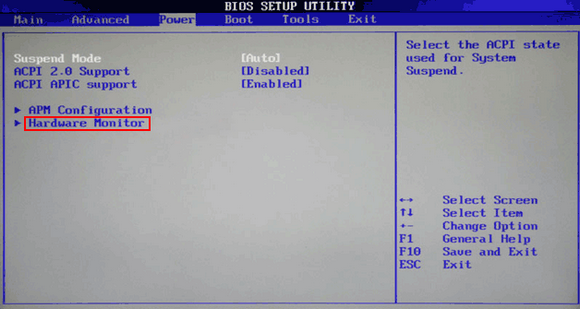
For processors Intel programs will allow you to reduce or increase the speed of rotation of the cooler Riva tuner, speedfan. They have great functionality, a choice of settings, a clear interface, do not take up much space, automatically control the operation of coolers.
If third-party software on the PC does not allow you to adjust the fan speed, the processor cooler can be controlled using original utilities from manufacturers. For example, HP has a program Notebook Fan Control, in Acer - smart fan, ACFanControl. In Lenovo - fan control.
Modern "advanced" cooling systems, which are most often used in overclocking, include: radiator, freon, liquid nitrogen, liquid gel. Their principle of operation is based on the circulation of the coolant. Strongly heated elements heat the water, which is cooled in the radiator. It can be outside the case or be passive, working without a fan.
Conclusion
In this article, various causes of overheating of the processor and solutions for this problem were considered. Sometimes the reason for its occurrence can be ordinary dust, which periodically needs to be removed, or the consequences of inexperienced overclocking of equipment, as well as its upgrade. When replacing thermal paste, you must be careful and careful not to damage the equipment.
Related videos
To maintain the desired temperature regime of the computer and its main components, a cooler is used. A cooler is a small fan device connected to temperature sensors, the intensity of which depends on how heavily loaded the central processor or video card is.
In order to increase the fan speed on a laptop, you usually need to change the corresponding setting in the computer's base system - the BIOS. This method usually assumes that the user has special knowledge and understanding of technical terms on English language, and also gives you more options for configuring your computer and its components than similar steps performed using special programs in working Windows environment. However, changing parameters through the operating Windows system much safer and eliminates the risk of harming your computer due to incorrect settings.
Quick article navigation
Speedfan program
To change the speed of rotation of coolers in a laptop using a third-party software, required:
- Launch internet browser.
- Go to the official website of the SpeedFan program (almico.com/speedfan.php).
- Using the appropriate buttons on the site, download the program and install it.
- To restart a computer.
- Launch the application.
- On home page program to adjust the values of the "pwm1" and "pwm2" parameters, which will correspond to the first and second cooler. If more cooling devices are installed in the computer, they will also be available to the user for configuration.
- Save changes and close the program window.
If “pwmX” parameters are set to “0”, the corresponding fan will be stopped, and with a value of “100”, it will always spin at full power. Both values are not recommended for installation, as they can lead to overheating or disable the cooler itself.
BIOS
In order to increase the rotation rate of coolers in a laptop through the basic I / O system, you must:
- Turn off computer.
- Turn it back on.
- Read the inscriptions that appeared immediately after turning on and press the button indicated in one of the sentences (usually it is “F2”, “Del”, or “F12”). The BIOS menu will open.
- In one of the BIOS tabs, moving the arrows on the keyboard, find the "Fan Control" or "CPU Q-Fan Function" parameter
- Select an option and activate it.
- Select one of the cooler operating modes (the most intensive one, usually “Performance”).
- Exit to the main BIOS menu using the "Esc" key.
- Exit the BIOS by confirming the changes by pressing the "Y" key.
- Wait until the computer turns on in normal mode.
There are two main reasons for overclocking a fan. The first one is too high the temperature of the components inside the system unit, not related to dust contamination of the computer or a malfunction of the cooling systems. In this case it is logical pick up speed cooling fans within acceptable limits.
The second reason, on the contrary, requires decrease this very speed - increased noise. It is important to find a reasonable compromise in all this - the most quiet operation with sufficient cooling of the components. Therefore, there must be some way change fan speed. How to do this will be discussed next.
Initially, the speed of rotation is specified in the settings. BIOS, based on which the computer motherboard sets the specified parameters, in particular changing voltage supplied to the fans, thus controlling the number revolutions. However, this speed can be controlled not at all coolers, but only on three outputs, two-outputs will always work on greatest speed.
You can also adjust the speed of the fans installed on the video adapter and the central processor.
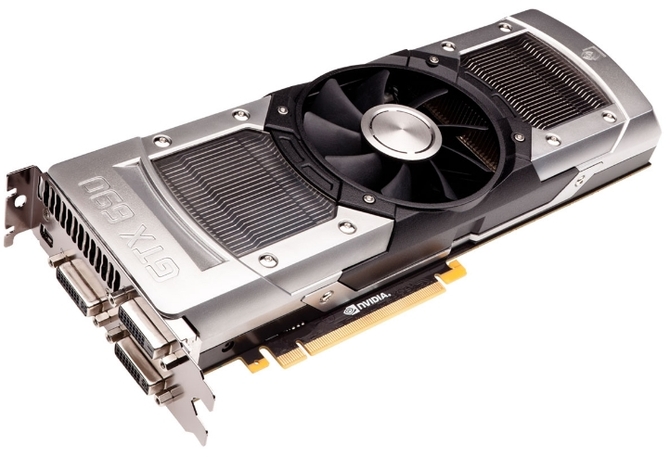
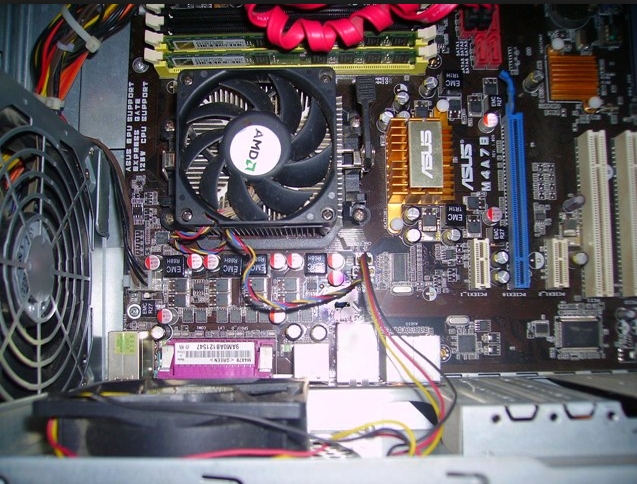
This can be done with BIOS(UEFI) or using third party programs, and some manufacturers release their proprietary utilities for monitoring laptop cooling systems.
Increase speed through bios
In order to initialization during system startup, press Del or F2
(or another option, depending on which bios). We find there an option related to the speed of the cooler, usually this is CPU Fan Speed and change the value. 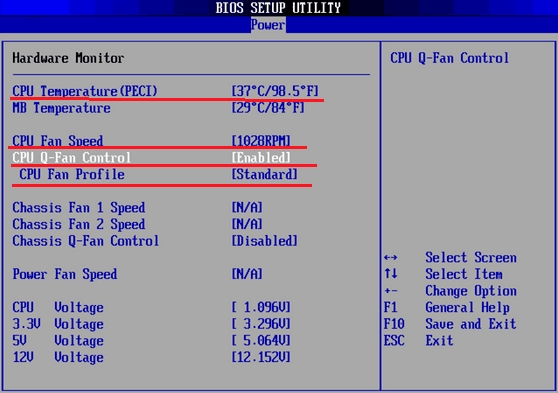
If there is no such item or it is impossible to make changes, then this can be done using special software.
In some BIOS there are options such as Smart CPU fan Temperature, CPU Smart fan control or noise control, the inclusion of which will allow you reduce noise when turned on auto adjustment revolutions during operation, that is, if the load is increased, then the revolutions increase, otherwise they decrease, up to a complete shutdown. 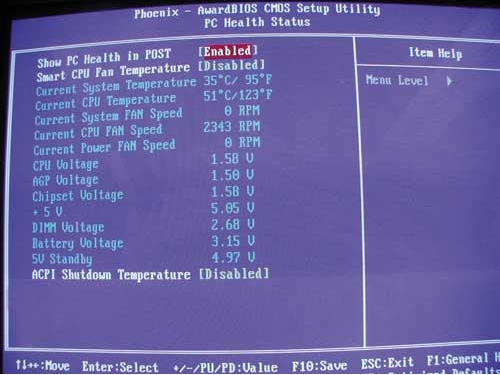
That is, setting in this way consists in setting a limiting temperature or simply enabling this function in the BIOS.
Using speedfan
most popular program to adjust the rotation speed of the coolers is speedfan. An old and very famous utility, free and easy to use. Finding and downloading it will not be a problem.
The installation process is shown below. Everything is intuitive.
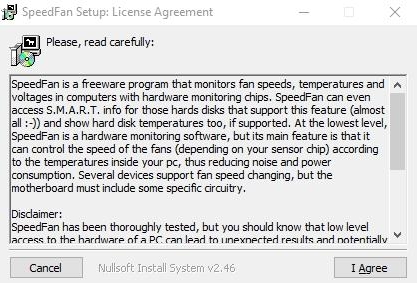
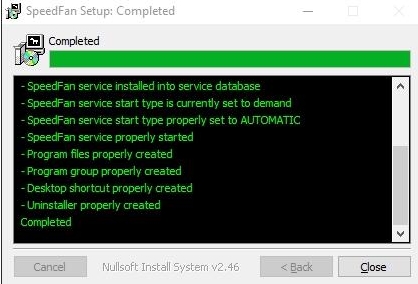
By setting the program will see the following window. 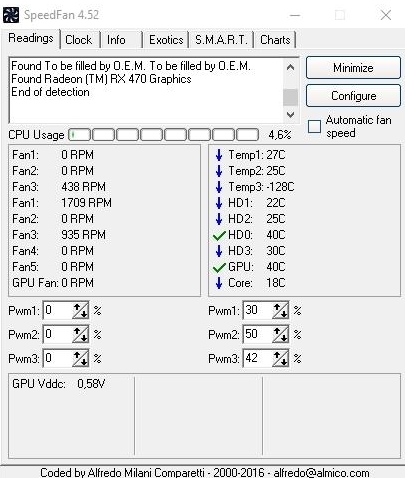
The principle of operation of all versions is similar.
See CPU usage on this moment can in the field CPU Usage. Check the box to enable automatic rotation adjustment. Automatic fan speed.
Below is a set of fan speeds and temperatures that you have installed, where:
- RPM- the number of revolutions per minute;
- Fan1- a cooler connected to the connector near the chipset;
- Fan2- the cooler on the processor is also called CPUFan,
- fan4 - the second processor fan, if any;
- Fan3- a propeller thrown to the AUX0 terminals;
- Fan5– AUX1;
- PWRFan- a cooler in the power supply;
- GPUFan- video card fan.
Below in percentage you can change range of smallest and largest revolutions adjusting them by pressing the arrows. This will immediately affect the volume of their work, which you will immediately feel. Just do not turn off the fans completely, there is a risk of burning any of the components.
Speed control with AMD OverDrive and Riva Tunes
Proprietary utility AMD OverDrive will allow you to change the settings of AMD platforms. 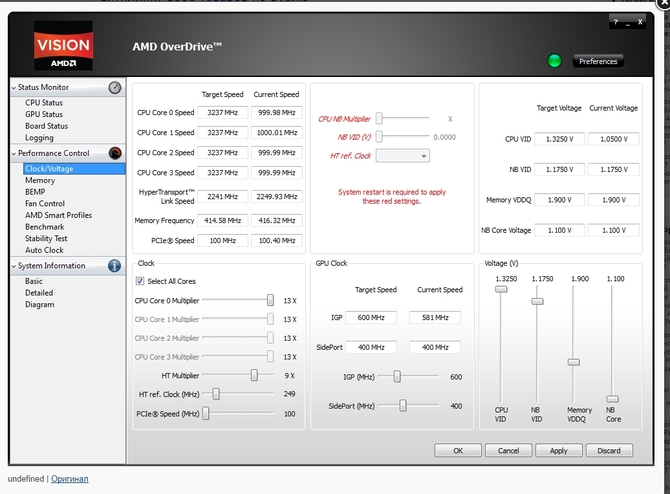
Among many other features, you can also programmatically control speed coolers.
You can run this program only on chipsets supported by AMD 770, 780G, 785G, 790FX/790GX/790X, 890FX/890G//890GX, 970, 990FX/990X, A75, A85X. 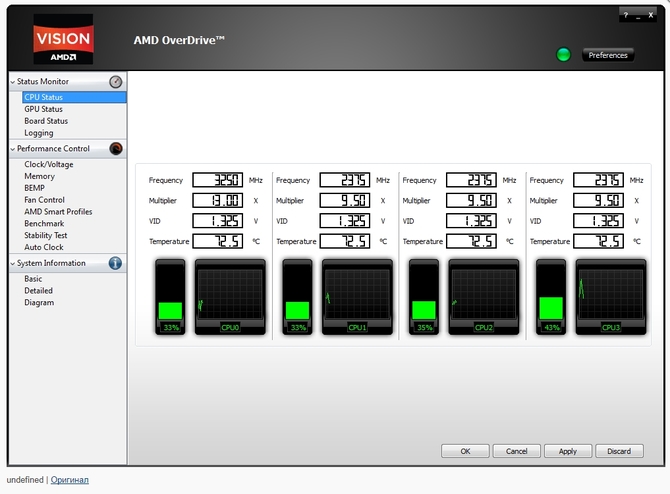
After starting the program, click the section fan control and select the required characteristics fan speeds.
Another interesting program with the function of regulating the speed of coolers is Riva tuner. First of all, owners of very hot video cards prefer to use it.
Download and install the program. In our case, this is version 2.21. 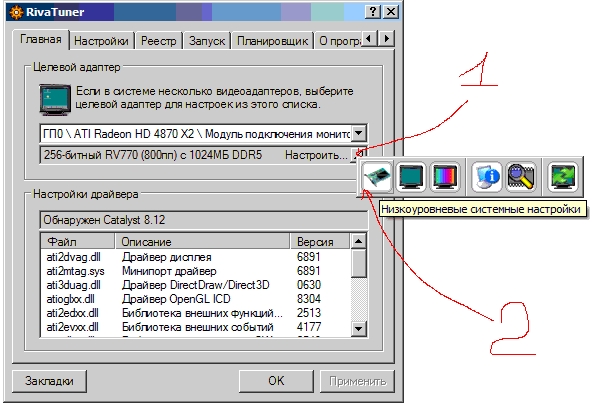
Running, we find low-level system settings, then open the bookmark Cooler. The following window opens before us. 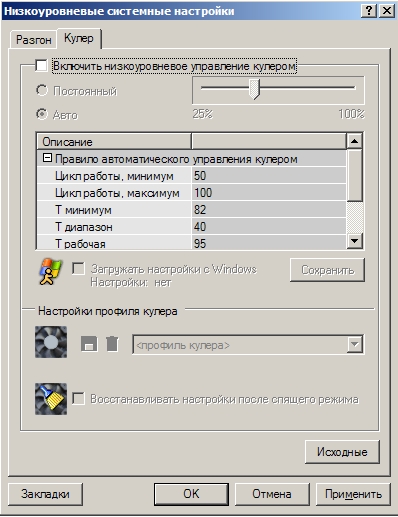
Tick on Enable low-level management cooler. Create a preset fan speed, indicating the desired value as a percentage. Let's create some presets. 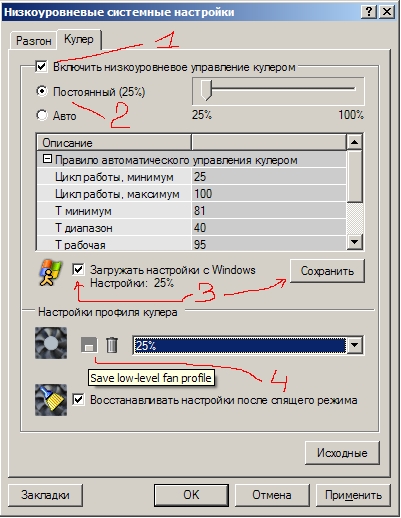
Create a task depending on when you want to get the fan speed reduction, i.e. by setting schedule, range temperatures and others characteristics.
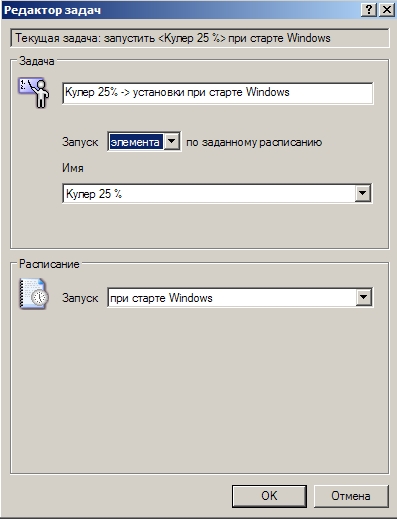
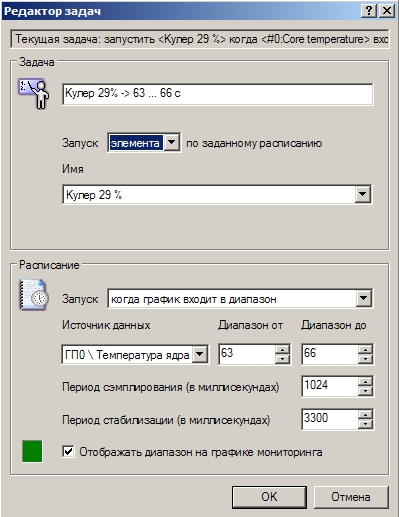
In this way it is possible to achieve fine settings speeds of coolers depending on the temperature change of the component of the system unit.




